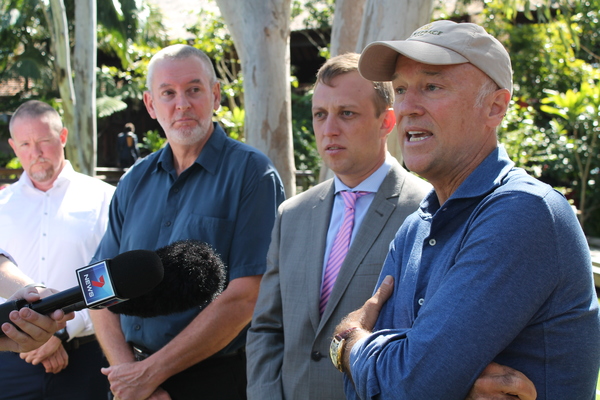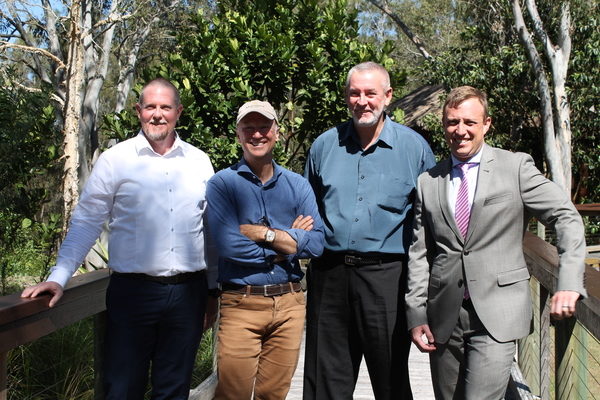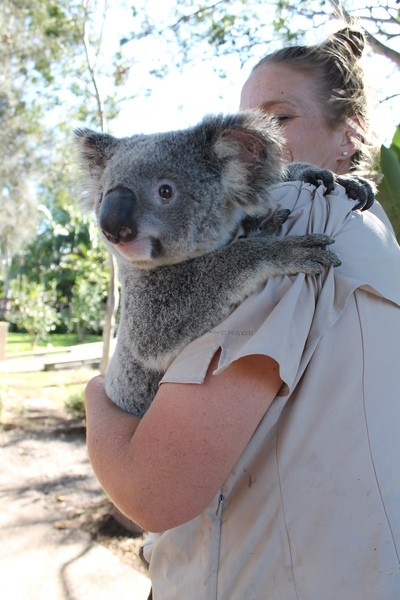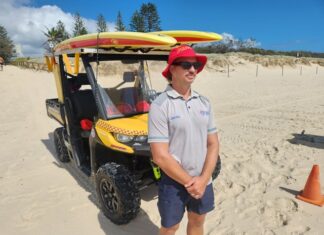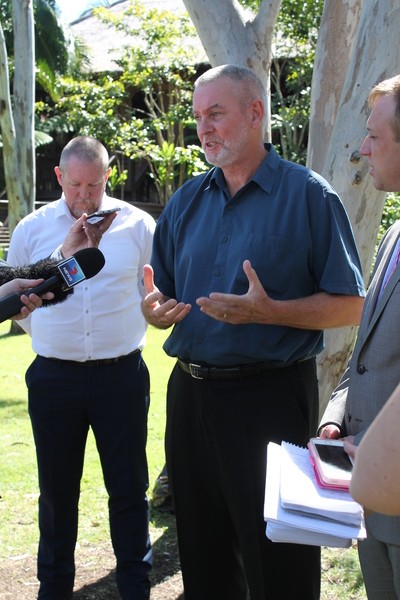
By Jolene Ogle
RELIEF is in sight for the devastated Noosa koala population, with a new chlamydia vaccine likely to be trialled throughout the region.
Speaking at a fund-raising luncheon at Makepeace Island on Friday (30 September), microbiology Professor at the University of the Sunshine Coast Peter Timms said he and his research team had been working on a vaccination for up to six years and was excited to take the research into reality.
“We’ve been working on developing a vaccine for five or six years and everything looks really promising, so here’s our chance to take it into a real population and use it as one of the management tools,” he said.
Professor Timms said using a vaccine in this way for a koala population hadn’t been done before, but the vaccination program could see a great improvement in reproductive rates and reduce koala deaths.
“That’s why we need to start with a new population and vaccinate as many koalas as we can,” he said.
“We’re taking the research into reality and hope to start saving animals today and tomorrow. We can get started pretty soon on this and I think it’s a really exciting day.”
Professor Timms, along with Dr Jon Hanger, is part of the Richard Branson Koala Conservancy program that aims to encourage collaborative conservation and research measures between the government, scientific and community groups.
In a statement to media, the program is said to “fund koala research to contribute to the sustainability of koalas in Queensland and the Noosa region in particular”.
“With so little known about the Noosa koala population (in scientific terms), the big opportunity lies in dovetailing the first regional Koala Conservation Management Plan (currently being finalised by Noosa Council and applying scientific rigour to fill in the blanks, so that our future koala conservation efforts … are scientifically sound and well-directed,” the media statement said.
Dr Hanger said studies on Noosa’s koala population were lacking and he looked forward to learning more about what factors impacted the local animals’ survival rates.
“We know there are a range of factors that are commonly affecting koalas throughout south-east Queensland. We know chlamydia is an important factor and we know that causes the death of koalas, illness and reproductive loss. We know that wild dogs can be a critical factor as well and we know domestic dogs and cars can be,” he said.
“The key factor is we need to know what proportion those are playing in terms of the mortality of the population because then we can target our resources so we know we are getting the best effect. Ultimately that means going into a koala population, catching and radio tagging as many as we can, and following those koalas so we know if they die, what they died from.”
Dr Hanger said so long as the team could intensively manage the koala population, they could see a growth in the population within two years.
“If we capture a koala and find that it’s sick we treat it straight away and as soon as we start treating a number of koalas, we’re already having benefits for the population in regards to reducing the infection rates and vaccinating koalas to ensure they’re protected into the future,” he said.
Makepeace Island co-owner Brett Godfrey said he looked forward to helping support the future scientific research of local koala populations and the $25,000 raised at the luncheon was a great place to start.
“I’ve spent 15 years coming to Noosa and the koala population in that time has been decimated. I just don’t see them in the North Shore or the parks anymore,” he said.
“Today is all about trying to raise awareness and see if we can raise some money for (Professor) Peter and (Dr) John, who are the foremost authorities in this area and I believe with our help and our support, we can change what’s is happening (to the koala population) in this part of Queensland.”

